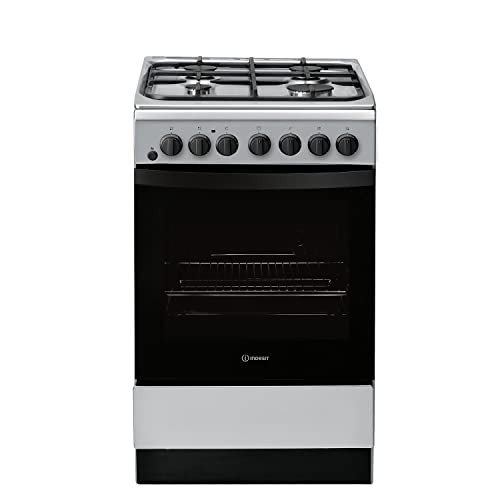Understanding Kitchen Ovens and Hobs: A Comprehensive Guide
The kitchen is often referred to as the heart of the home, and for excellent factor. It is where families come together, meals are prepared, and memories are developed. Central to this cooking haven are 2 necessary devices: the kitchen oven and the hob. Comprehending their features, types, and performances is crucial for effective cooking and can substantially enhance a home chef's experience. This post will look into the world of kitchen ovens and hobs, analyzing their numerous types, advantages, and suggestions for making notified choices.
Tabulation
- Introduction to Kitchen Ovens
- Kinds of Ovens
- Traditional Ovens
- Convection Ovens
- Microwave Ovens
- Steam Ovens
- Comprehending Hobs
- Kinds of Hobs
- Gas Hobs
- Electric Hobs
- Induction Hobs
- Advantages of Using Ovens and Hobs
- Selecting the Right Oven and Hob for Your Kitchen
- Maintenance Tips for Ovens and Hobs
- Frequently asked questions
- Conclusion
1. Intro to Kitchen Ovens
Ovens are essential devices in modern cooking areas. They provide a regulated environment for baking, roasting, and broiling food. With various styles and performances, picking the right oven can dramatically affect cooking times, food texture, and flavor.
2. Types of Ovens
Standard Ovens
Standard ovens are the most typical type found in homes. They utilize either electric or gas power to heat the interior and usually include a single cooking area.
Advantages:
- Versatile for baking, roasting, and broiling.
- Generally inexpensive.
Convection Ovens
Stove resemble standard ovens however come geared up with a fan that flows hot air throughout the cooking chamber. This results in even cooking and browning.
Advantages:
- Reduced cooking times due to enhanced airflow.
- Improved browning and crisping of foods.
Microwave Ovens
Microwave ovens utilize electromagnetic radiation to heat food rapidly, making them practical for defrosting and reheating leftovers.
Advantages:
- Very fast cooking times.
- Energy efficient.
Steam Ovens
Steam ovens make use of steam to prepare, preserving the moisture and nutrients in food. They are particularly popular among health-conscious cooks.
Advantages:
- Healthier cooking option.
- Retains vitamins and minerals in food.
3. Comprehending Hobs
Hobs, also understood as cooktops, are the flat surface areas on which pots and pans are positioned to cook food. They can be integrated into kitchen countertops and are readily available in different styles, fuel types, and designs.
4. Types of Hobs
Gas Hobs
Gas hobs use gas burners as their heat source, offering immediate heat and exact temperature control.
Advantages:
- Excellent control over cooking heat.
- Typically cheaper to run than electric ones.
Electric Hobs
Electric hobs heat utilizing electric coils or glass surface areas. They may take longer to heat up than gas, but they offer a smooth cooking surface and are much easier to clean up.
Benefits:
- Even heat circulation.
- Safe, as there's no open flame.
Induction Hobs
Induction hobs use electromagnetic energy to straight heat up pots and pans. They require suitable pots and pans and offer instant responsiveness.
Advantages:
- Highly energy-efficient.
- Faster cooking times and exact temperature level control.
5. Advantages of Using Ovens and Hobs
Both ovens and hobs featured their own special set of advantages that can boost any cooking experience. Here are a few essential advantages:
- Diverse Cooking Options: Both appliances permit for a series of cooking techniques including boiling, frying, roasting, baking, and steaming.
- Time Efficiency: Modern ovens and hobs typically feature fast cooking settings, which conserve time in the kitchen.
- Precision Cooking: With innovative functions, users can accomplish much better lead to temperature level control and cooking times.
6. Choosing the Right Oven and Hob for Your Kitchen
When picking the right oven and hob, different aspects need to be considered:
- Size: Ensure that the appliance fits conveniently in your kitchen area.
- Cooking Style: Consider what kinds of food you frequently prepare.
- Fuel Type: Whether gas or electric, think about availability and performance in your location.
- Budget plan: Determine your budget plan and find appliances that satisfy your requirements within that range.
Checklist for Choosing Your Oven and Hob:
- Assess kitchen space.
- Identify your cooking choices.
- Determine source of power accessibility.
- Compare functions and specs.
- Set a spending plan range.
7. Maintenance Tips for Ovens and Hobs
Routine maintenance is vital for keeping ovens and hobs in optimum condition. Here are some maintenance ideas:
- Clean Regularly: Wipe down surface areas after each use and deep tidy periodically.
- Examine Seals: For ovens, inspect door seals to guarantee they are airtight.
- Analyze Burners: For gas hobs, keep burners without food debris to maintain efficient heating.
- Replace Filters: If your oven has a filter, replace it as advised by the manufacturer.
8. Frequently asked questions
1. What is the difference in between a traditional oven and a convection oven?Conventional ovens
cook food through convected heat, while stove distribute hot air, resulting in much faster and more even cooking. 2. Do Ovens With Hobs require special cookware?Yes,
induction hobs need ferrous cookware that is capable of being allured to work effectively. 3. Are steam ovens worth the investment?For health-conscious people or those who often prepare veggies and fragile foods, steam ovens can be worth the investment
due to their ability to maintain nutrients. 4. Can I integrate an oven and hob into one unit?Yes, numerous makers offer combined units referred to as range cookers, which integrate both an oven
and hob into a single device. 9. Conclusion Kitchen ovens and hobs are vital parts of any culinary area, each offering distinct functions and functionalities suited for numerous cooking designs.
By comprehending the
kinds of ovens and hobs readily available, their advantages, and how to keep them, home chefs can cultivate a more effective and satisfying cooking experience. Whether one is a skilled cook or a beginner, making notified decisions about these necessary kitchen home appliances is vital.

